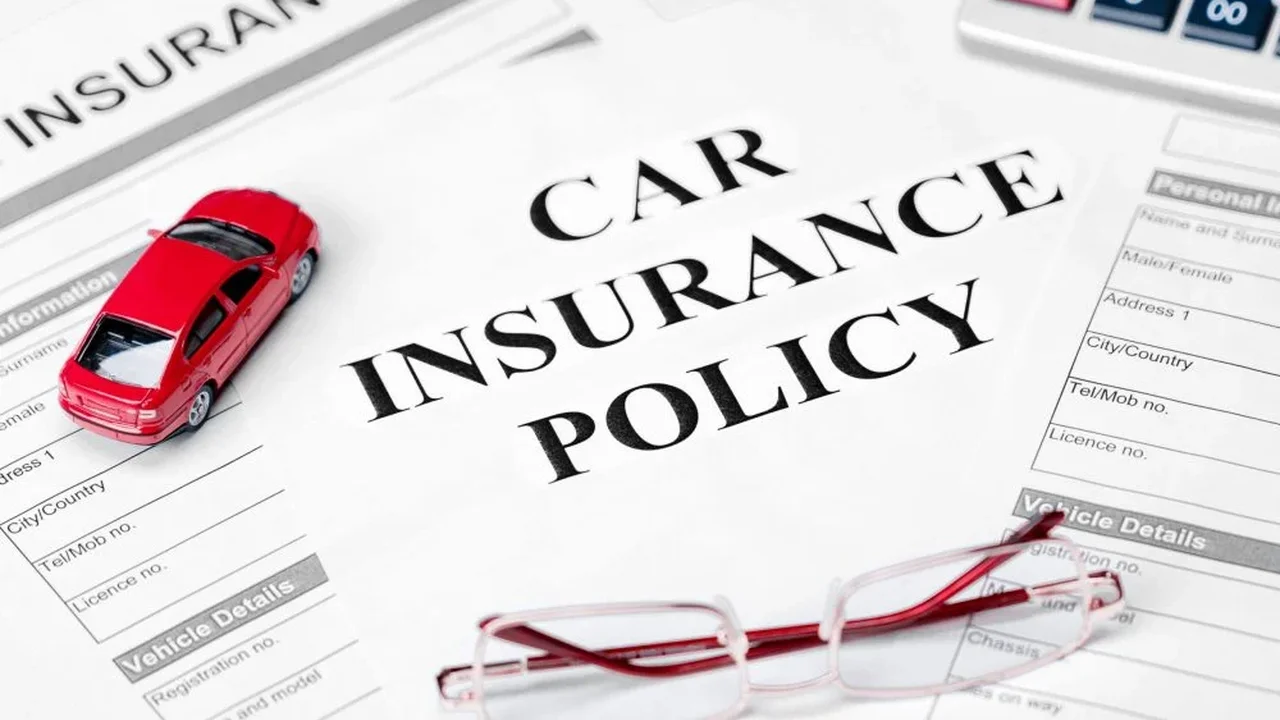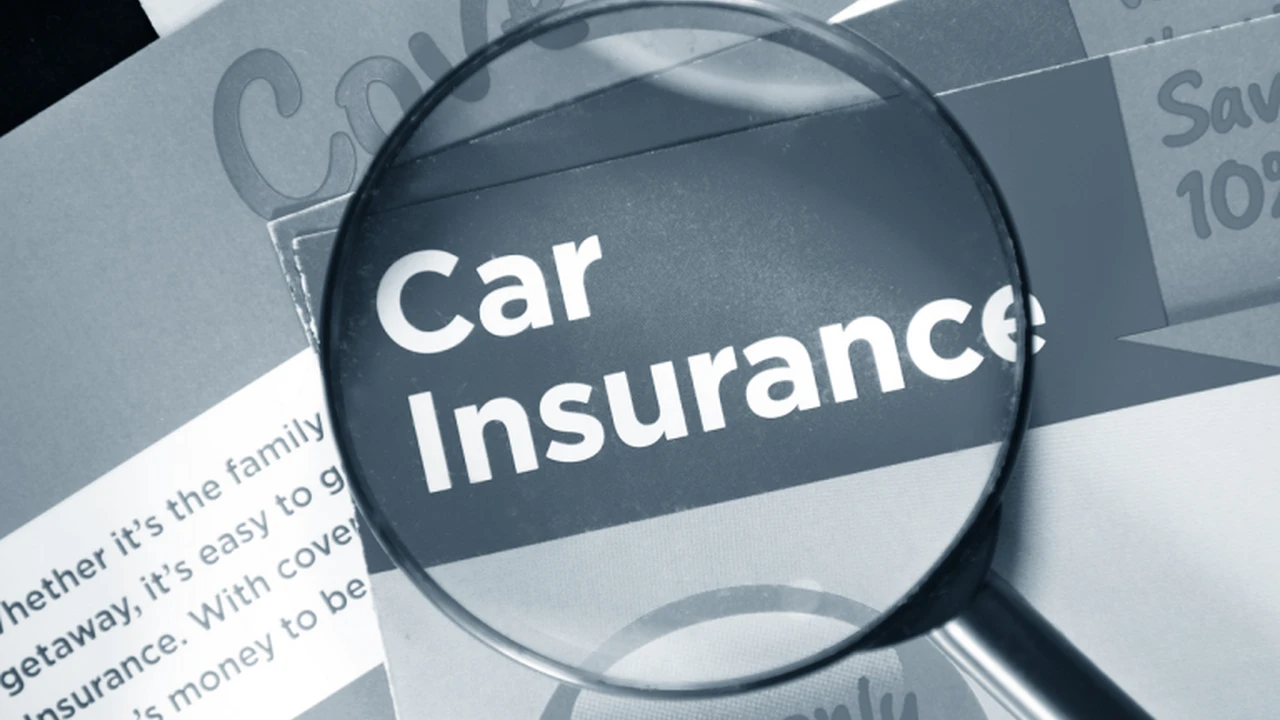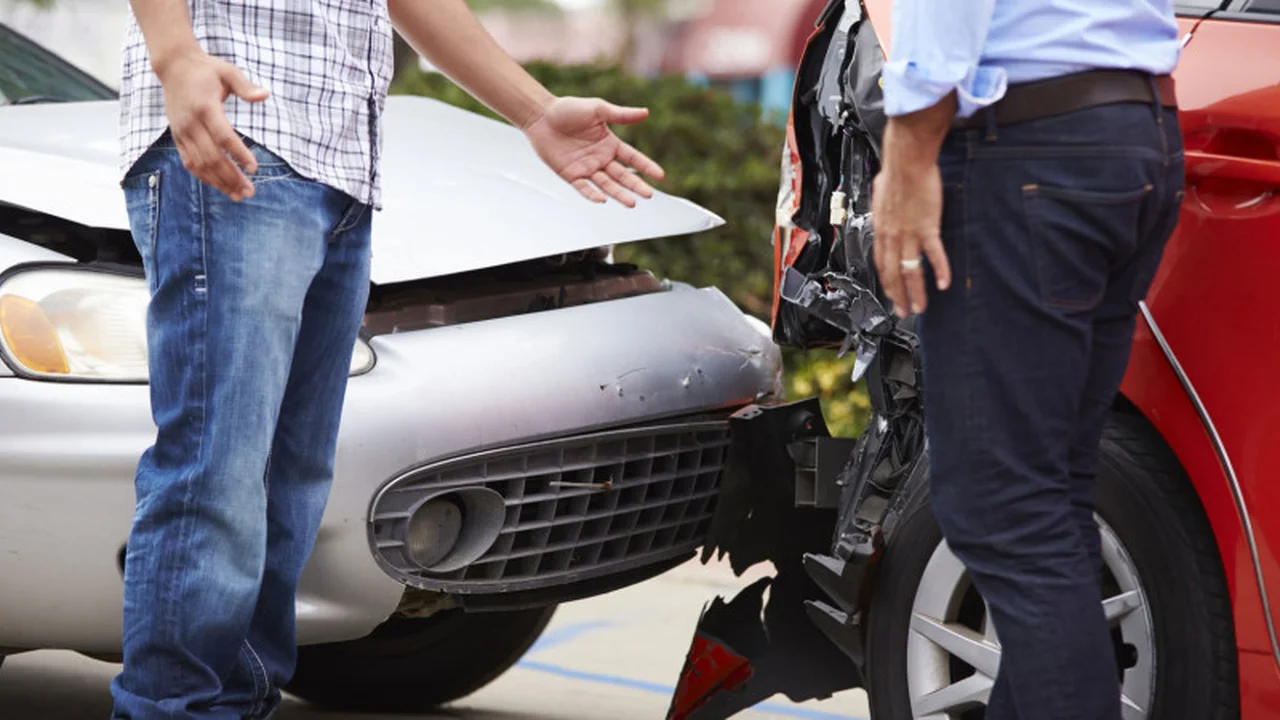Car Insurance Premiums: Factors That Influence Your Rate

What Car Insurance Coverage Do You Really Need Exploring Liability Coverage
Okay, so you're diving into the world of car insurance. It can seem like a total jungle of jargon and confusing options, right? Let's break down one of the most important parts: liability coverage. This is the stuff that protects you if you're at fault in an accident and someone else gets hurt or their property gets damaged. Think of it as your financial safety net if things go sideways.
Liability coverage actually has two parts: bodily injury liability and property damage liability. Bodily injury covers the other person's medical bills, lost wages, and even pain and suffering if they're injured. Property damage covers the cost to repair or replace their car (or fence, or whatever you hit!).
Now, how much liability coverage do you need? That's the million-dollar question (literally, in some cases!). State laws usually set minimums, but those minimums are often shockingly low. Think about it: if you cause a serious accident with multiple injuries, those minimums might not even scratch the surface of the costs. You could be personally liable for the rest, meaning they could come after your assets like your house or savings. Yikes!
So, what's a good amount? Experts often recommend carrying at least $100,000 per person and $300,000 per accident for bodily injury (that's often written as 100/300), and $100,000 for property damage. If you have significant assets, you might even want to consider higher limits, or an umbrella policy, which provides extra liability coverage on top of your car insurance.
Don't skimp on this, folks. It's the most crucial part of your car insurance policy.
Comprehensive and Collision Coverage Protecting Your Vehicle from Damage
Alright, you've got the liability stuff sorted (hopefully!), now let's talk about protecting *your* car. That's where comprehensive and collision coverage come in. These are optional coverages, but they can be lifesavers if your car gets damaged. Think of it as insurance for your insurance!
Collision coverage pays for damage to your car if you hit another car or object, or if your car rolls over. It doesn't matter who's at fault. So, even if you're the one who caused the accident, collision coverage will kick in (minus your deductible, of course).
Comprehensive coverage, on the other hand, covers damage to your car from pretty much anything *other* than a collision. Think things like theft, vandalism, fire, hail, flood, hitting a deer... you get the idea. Basically, anything that's out of your control.
So, do you need both? Well, if you have a relatively new car or a car that's worth a decent amount of money, the answer is probably yes. If you're still paying off your car loan, your lender will likely require you to have both comprehensive and collision coverage. If your car is older and not worth much, you might consider skipping these coverages, as the cost of the premiums might outweigh the potential payout.
When choosing your deductible (the amount you pay out-of-pocket before insurance kicks in), remember that a lower deductible means higher premiums, and vice versa. Find a balance that works for your budget and risk tolerance.
Uninsured and Underinsured Motorist Coverage Safeguarding Against Negligent Drivers
Okay, this one's a bit of a downer, but it's super important: uninsured and underinsured motorist coverage. This protects you if you're hit by someone who either doesn't have insurance at all (an uninsured driver) or doesn't have enough insurance to cover your damages (an underinsured driver).
Unfortunately, there are a lot of uninsured drivers out there, and even drivers with insurance might not have enough coverage to pay for all your medical bills and car repairs if you're seriously injured. That's where this coverage comes in. It essentially steps in and acts as the other driver's insurance policy.
Uninsured motorist coverage typically has two parts: bodily injury and property damage. The bodily injury part covers your medical bills, lost wages, and pain and suffering if you're injured by an uninsured driver. The property damage part covers the damage to your car (although in some states, you might have to pay a deductible for this).
Underinsured motorist coverage kicks in when the other driver's insurance policy isn't enough to cover your damages. For example, let's say you're seriously injured in an accident, and your medical bills and lost wages total $200,000. The other driver only has $100,000 in liability coverage. Your underinsured motorist coverage would then kick in to cover the remaining $100,000 (up to your policy limits, of course).
Like liability coverage, it's a good idea to carry decent limits for uninsured and underinsured motorist coverage. Think about it: you don't want to be stuck paying for someone else's negligence.
Comparing Car Insurance Quotes Finding the Best Rates and Coverage Options
So, you know what coverages you need, now how do you find the best deal? The key is to shop around and compare quotes from multiple insurance companies. Don't just stick with the first quote you get! Prices can vary wildly between companies for the exact same coverage.
There are a few ways to get quotes. You can go directly to each insurance company's website and get a quote online, or you can work with an independent insurance agent who can get quotes from multiple companies for you. Online comparison tools can also be helpful, but be aware that they might not include every insurance company.
When you're comparing quotes, make sure you're comparing apples to apples. That means you need to be getting quotes for the exact same coverages and limits. Don't just focus on the price. Look at the details of the policy and make sure it meets your needs.
Also, be sure to ask about discounts. Many insurance companies offer discounts for things like being a safe driver, having multiple cars insured, bundling your car and home insurance, being a student, or being a member of certain organizations.
Don't be afraid to negotiate! If you get a quote that's higher than you were expecting, see if the company is willing to lower the price. Sometimes, they'll be willing to match a lower quote from a competitor.
Understanding Deductibles and Premiums Balancing Cost and Coverage
Let's talk about the relationship between deductibles and premiums. Your deductible is the amount you pay out-of-pocket before your insurance coverage kicks in. Your premium is the amount you pay each month (or year) for your insurance coverage.
Generally, the higher your deductible, the lower your premium, and vice versa. That's because you're taking on more risk by having a higher deductible. If you have a lower deductible, the insurance company is taking on more risk, so they charge you a higher premium.
So, how do you choose the right deductible? It depends on your financial situation and your risk tolerance. If you're comfortable paying more out-of-pocket in the event of an accident, you can choose a higher deductible and save money on your premiums. If you'd rather pay less out-of-pocket, you can choose a lower deductible, but you'll pay more in premiums.
A good rule of thumb is to choose a deductible that you can comfortably afford to pay if you had to file a claim tomorrow. Don't choose a deductible that's so high that you wouldn't be able to afford to pay it.
Also, consider your driving habits. If you're a safe driver and rarely have accidents, you might be comfortable with a higher deductible. If you're a more aggressive driver or live in an area with a lot of traffic, you might want to choose a lower deductible.
Navigating Car Insurance Claims Filing and Resolution Process
Okay, so you've been in an accident. Now what? The first thing to do is to make sure everyone is safe and call the police if necessary. Once that's taken care of, it's time to file a car insurance claim.
The first step is to contact your insurance company and report the accident. They'll give you a claim number and assign a claims adjuster to your case. The claims adjuster will investigate the accident and determine who's at fault and how much the damages are.
Be prepared to provide the claims adjuster with all the details of the accident, including the date, time, and location of the accident, the names and contact information of all parties involved, and a description of the damages to your car.
You'll also need to provide the claims adjuster with any relevant documents, such as the police report, your car insurance policy, and any photos or videos of the accident scene.
The claims adjuster will then review all the information and determine who's at fault. If you're at fault, your insurance company will pay for the damages to the other driver's car and any injuries they sustained (up to your policy limits). If the other driver is at fault, their insurance company will pay for your damages.
If you disagree with the claims adjuster's decision, you have the right to appeal. You can also hire a lawyer to help you with your claim.
Product Recommendations and Comparisons for Car Insurance Policy Options
Alright, let's get into some specific product recommendations. Keep in mind that the best car insurance policy for you depends on your individual needs and circumstances, so it's always a good idea to get quotes from multiple companies and compare their offerings.
State Farm: State Farm is a well-established and highly rated insurance company that offers a wide range of coverage options. They're known for their excellent customer service and their strong financial stability. State Farm is a good choice if you're looking for a reliable and reputable insurance company with comprehensive coverage options.
Ideal for: Families, homeowners, and those seeking personalized service through local agents.
Cost: Generally in the mid-range price point, reflecting their strong service and comprehensive coverage.
GEICO: GEICO is another popular insurance company that's known for its competitive rates and its easy-to-use online tools. They're a good choice if you're looking for affordable car insurance and you're comfortable managing your policy online.
Ideal for: Budget-conscious drivers, those comfortable with online policy management, and students.
Cost: Often one of the most affordable options, especially for drivers with good records.
Progressive: Progressive is another well-known insurance company that offers a variety of coverage options and discounts. They're known for their "Name Your Price" tool, which allows you to customize your coverage and find a policy that fits your budget.
Ideal for: Drivers seeking flexible coverage options and the ability to customize their policy.
Cost: Competitive rates, with potential savings through their "Name Your Price" tool.
Allstate: Allstate is a large insurance company with a wide range of coverage options and a strong network of local agents. They're a good choice if you're looking for personalized service and a variety of insurance products, including car, home, and life insurance.
Ideal for: Individuals seeking a full range of insurance products and personalized service through local agents.
Cost: Typically in the mid-range to higher price point, reflecting their extensive service and coverage options.
USAA: (If you're eligible - military members and their families) USAA consistently ranks high in customer satisfaction and offers competitive rates and comprehensive coverage. Their customer service is legendary. They offer great rates, but you have to qualify.
Ideal for: Military members, veterans, and their families.
Cost: Often the most affordable option for eligible members, with excellent coverage and service.
Product Comparison Table:
| Company | Coverage Options | Customer Service | Price | Ideal For |
|---|---|---|---|---|
| State Farm | Excellent | Excellent | Mid-Range | Families, Homeowners |
| GEICO | Good | Good | Affordable | Budget-Conscious Drivers |
| Progressive | Good | Good | Competitive | Flexible Coverage Seekers |
| Allstate | Excellent | Good | Mid-Range to Higher | Full Range of Insurance Needs |
| USAA | Excellent | Excellent | Affordable | Military Members & Families |
Important Considerations:
- Discounts: Always inquire about available discounts (safe driver, multi-policy, student, etc.).
- Bundling: Bundling your car insurance with home or renters insurance can often lead to significant savings.
- Coverage Needs: Assess your individual needs and risk tolerance to determine the appropriate coverage levels.
Understanding Policy Renewals and Potential Rate Changes
Your car insurance policy isn't set in stone. It renews periodically, usually every six months or a year. At renewal time, your insurance company will reassess your risk and adjust your rates accordingly. This means your premium could go up, go down, or stay the same.
Several factors can affect your rates at renewal time. The most common factors include:
- Your driving record: If you've had any accidents or traffic violations during the policy period, your rates will likely go up.
- Your claims history: If you've filed any claims during the policy period, your rates may also go up.
- Your credit score: In many states, insurance companies use your credit score to assess your risk. If your credit score has gone down, your rates may go up.
- Changes in your vehicle: If you've purchased a new car or made any modifications to your existing car, your rates may change.
- Changes in your location: If you've moved to a new address, your rates may change, as different locations have different risk profiles.
- Changes in the insurance market: Overall changes in the insurance market, such as increases in the cost of repairs or medical care, can also affect your rates.
Before your policy renews, your insurance company will send you a renewal notice outlining any changes to your coverage or rates. It's important to review this notice carefully and make sure you understand any changes. If you're not happy with the renewal rates, you can shop around for a new policy.
To potentially lower your rates at renewal time, consider the following:
- Improve your driving record: Avoid accidents and traffic violations.
- Increase your deductible: A higher deductible will lower your premium.
- Shop around for a new policy: Get quotes from multiple companies and compare their rates.
- Ask about discounts: See if you qualify for any discounts.
- Maintain good credit: Pay your bills on time and keep your credit utilization low.
:max_bytes(150000):strip_icc()/277019-baked-pork-chops-with-cream-of-mushroom-soup-DDMFS-beauty-4x3-BG-7505-5762b731cf30447d9cbbbbbf387beafa.jpg)






